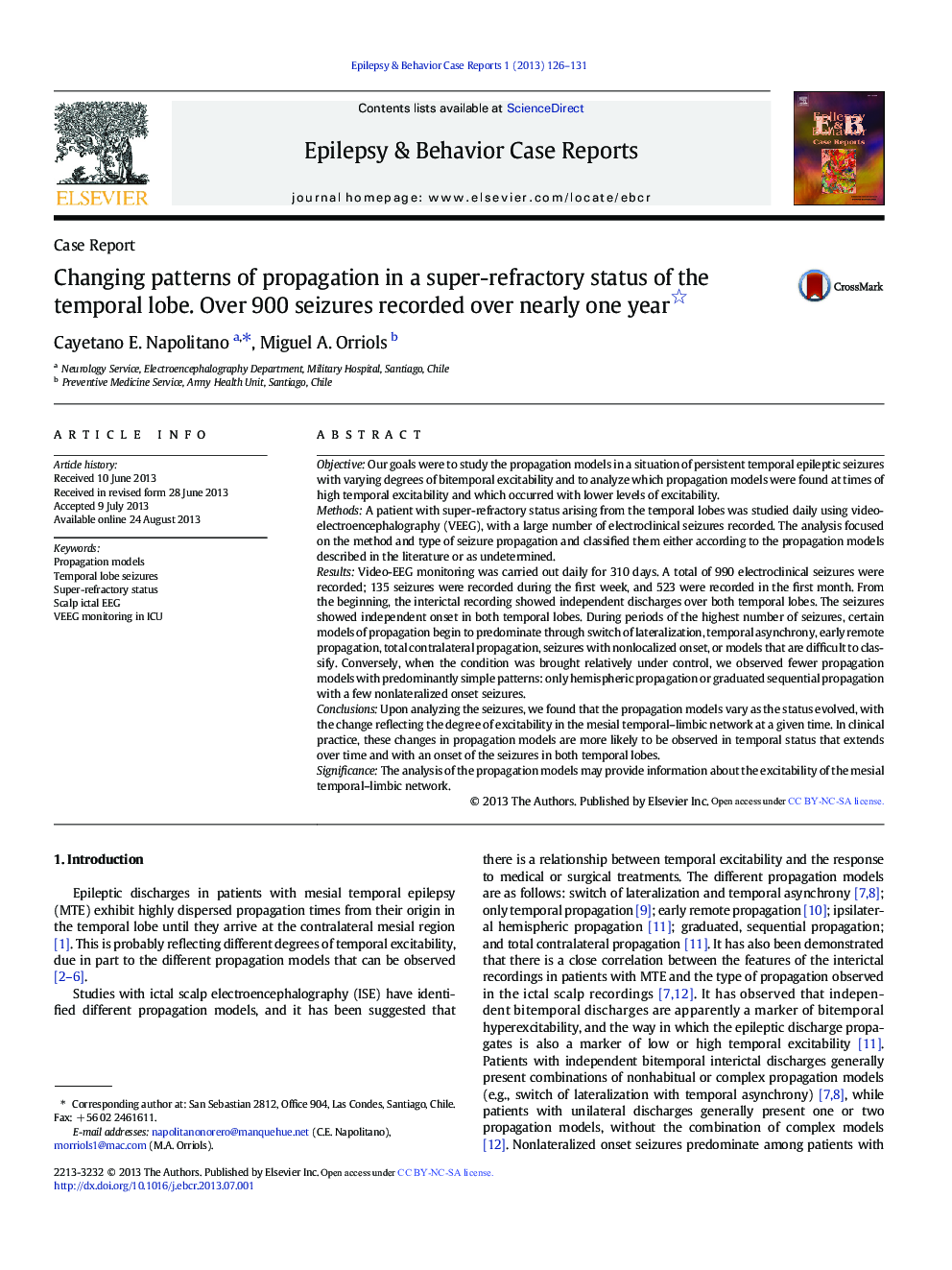| Article ID | Journal | Published Year | Pages | File Type |
|---|---|---|---|---|
| 3051885 | Epilepsy & Behavior Case Reports | 2013 | 6 Pages |
•Studies with ictal scalp electroencephalography (ISE) have identified different propagation models.•Propagation models change, probably related to the excitability at different times of the mesial temporal–limbic network.•During periods of poor seizure control, complex propagation models predominate.
ObjectiveOur goals were to study the propagation models in a situation of persistent temporal epileptic seizures with varying degrees of bitemporal excitability and to analyze which propagation models were found at times of high temporal excitability and which occurred with lower levels of excitability.MethodsA patient with super-refractory status arising from the temporal lobes was studied daily using video-electroencephalography (VEEG), with a large number of electroclinical seizures recorded. The analysis focused on the method and type of seizure propagation and classified them either according to the propagation models described in the literature or as undetermined.ResultsVideo-EEG monitoring was carried out daily for 310 days. A total of 990 electroclinical seizures were recorded; 135 seizures were recorded during the first week, and 523 were recorded in the first month. From the beginning, the interictal recording showed independent discharges over both temporal lobes. The seizures showed independent onset in both temporal lobes. During periods of the highest number of seizures, certain models of propagation begin to predominate through switch of lateralization, temporal asynchrony, early remote propagation, total contralateral propagation, seizures with nonlocalized onset, or models that are difficult to classify. Conversely, when the condition was brought relatively under control, we observed fewer propagation models with predominantly simple patterns: only hemispheric propagation or graduated sequential propagation with a few nonlateralized onset seizures.ConclusionsUpon analyzing the seizures, we found that the propagation models vary as the status evolved, with the change reflecting the degree of excitability in the mesial temporal–limbic network at a given time. In clinical practice, these changes in propagation models are more likely to be observed in temporal status that extends over time and with an onset of the seizures in both temporal lobes.SignificanceThe analysis of the propagation models may provide information about the excitability of the mesial temporal–limbic network.
